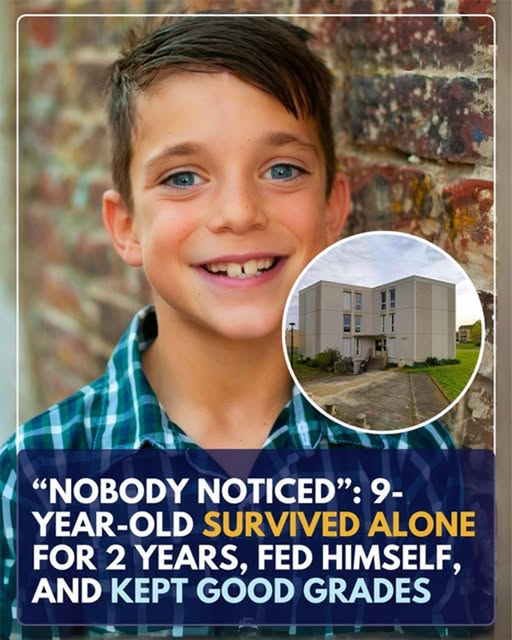In the quiet commune of Nersac, France, life seemed ordinary from the outside. Children went to school each morning, neighbors tended their homes, and routines unfolded as they always had. Yet behind one set of closed doors, a nine-year-old boy was living a life few could imagine—two years in near-total isolation, surviving without meaningful adult care or protection.
What makes his story particularly haunting is not only the neglect he endured, but also the remarkable way he concealed it from those around him. Against the odds, he managed to attend school, perform well academically, and present himself as a clean, “normal” child. His resilience delayed discovery, allowing his suffering to remain hidden in plain sight.
A Childhood of Silence and Survival
The boy’s daily life was defined by absence. His mother lived nearby but rarely assumed responsibility, leaving him to survive largely on his own. Visits were infrequent, inconsistent, and insufficient to meet his needs. With no adult ensuring his meals, he learned to make do with cold canned goods or scavenged food from a neighbor’s balcony.
Despite these conditions, he kept going to school, keeping himself presentable enough to avoid immediate suspicion. This ability to maintain appearances is both a testament to his determination and a heartbreaking reflection of how deeply children can normalize neglect in order to survive.
How He Remained Invisible
To teachers and classmates, the boy appeared as any other child. His academic performance was steady, his hygiene carefully maintained. By all outward measures, he seemed fine. It was only when a neighbor finally took closer notice that the full scope of his situation began to surface.
The fact that he was able to mask such profound neglect raises important questions: How could a child in plain sight suffer so quietly? What subtle signs were overlooked, and why did no one notice sooner?
The Role of Community and Schools
This case highlights the crucial role that communities and educators play in safeguarding vulnerable children. Schools are often the first line of defense when it comes to recognizing neglect, yet teachers and staff may not always have the training—or the context—to detect it when a child appears outwardly well.
In this instance, the boy’s ability to blend in shielded him from intervention for far too long. His case underscores the need for educators to receive not only training in spotting obvious signs of neglect but also awareness of less visible indicators, such as emotional withdrawal or unusual self-reliance.
Neighbors, too, are reminded of their responsibility. It was ultimately one neighbor’s decision to act that exposed the truth. Communities cannot afford to assume that children are safe simply because they appear to be coping.
Legal and Social Consequences
Once the reality of the boy’s circumstances came to light, legal action was taken against his mother. Authorities emphasized the severity of her neglect and the danger it posed to her child’s health and well-being. Beyond this single case, however, the story has fueled broader discussions in France about child welfare, parental accountability, and the need for stronger community vigilance.
A Story of Pain and Strength
Though devastating, the boy’s story also reflects extraordinary resilience. That he managed to survive, study, and remain outwardly functional is both inspiring and deeply saddening. No child should have to demonstrate such strength simply to endure neglect.
His hidden struggle serves as a reminder that children often carry burdens far heavier than they reveal. It is a call to action—for teachers, neighbors, and entire communities—to look closer, listen more carefully, and act decisively when something feels amiss.
In Nersac, one boy’s ordeal has become a symbol of both suffering and survival. It is also a warning: no child’s pain should ever remain invisible for so long.
